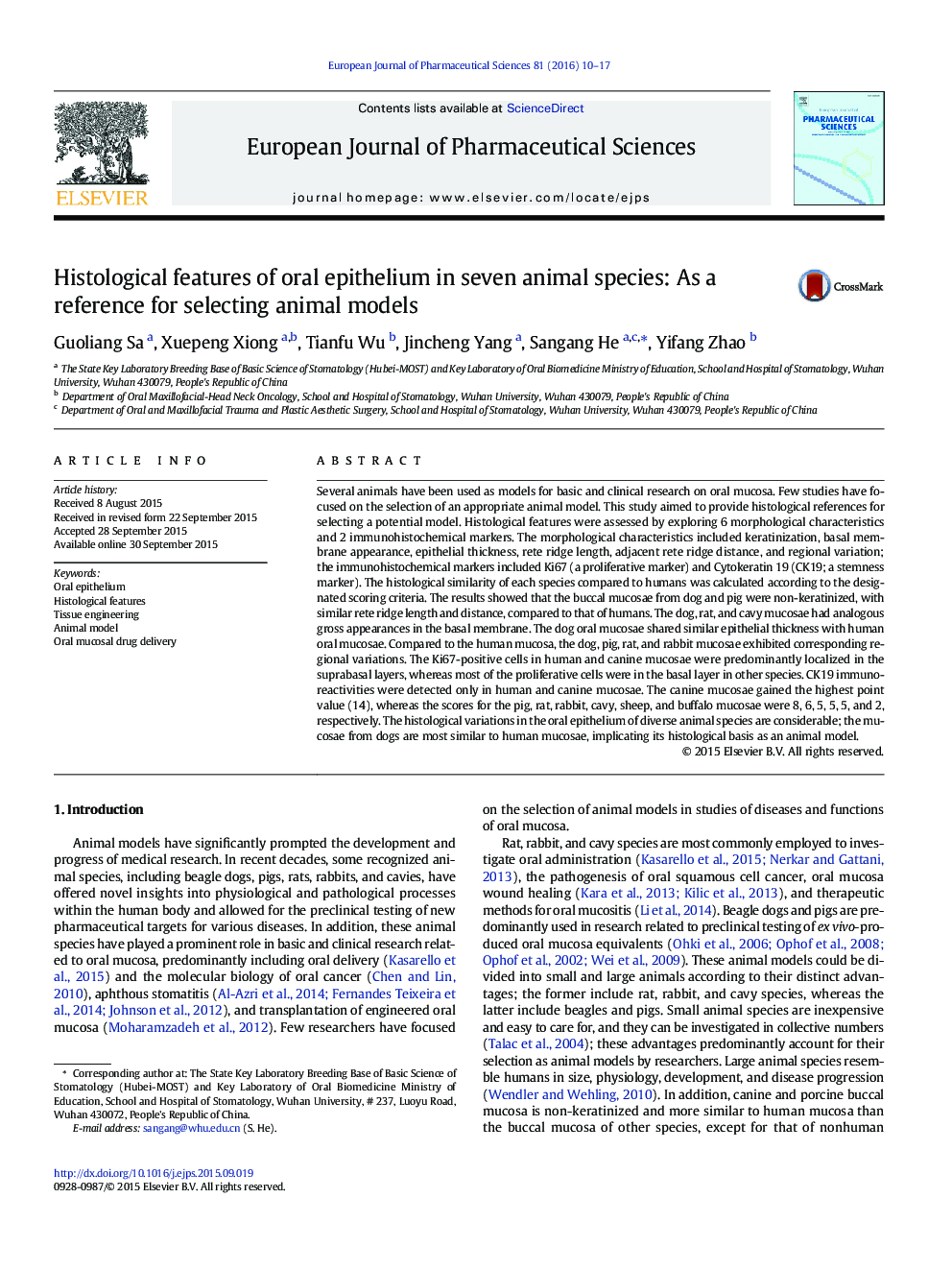| کد مقاله | کد نشریه | سال انتشار | مقاله انگلیسی | نسخه تمام متن |
|---|---|---|---|---|
| 2480078 | 1556169 | 2016 | 8 صفحه PDF | دانلود رایگان |
Several animals have been used as models for basic and clinical research on oral mucosa. Few studies have focused on the selection of an appropriate animal model. This study aimed to provide histological references for selecting a potential model. Histological features were assessed by exploring 6 morphological characteristics and 2 immunohistochemical markers. The morphological characteristics included keratinization, basal membrane appearance, epithelial thickness, rete ridge length, adjacent rete ridge distance, and regional variation; the immunohistochemical markers included Ki67 (a proliferative marker) and Cytokeratin 19 (CK19; a stemness marker). The histological similarity of each species compared to humans was calculated according to the designated scoring criteria. The results showed that the buccal mucosae from dog and pig were non-keratinized, with similar rete ridge length and distance, compared to that of humans. The dog, rat, and cavy mucosae had analogous gross appearances in the basal membrane. The dog oral mucosae shared similar epithelial thickness with human oral mucosae. Compared to the human mucosa, the dog, pig, rat, and rabbit mucosae exhibited corresponding regional variations. The Ki67-positive cells in human and canine mucosae were predominantly localized in the suprabasal layers, whereas most of the proliferative cells were in the basal layer in other species. CK19 immunoreactivities were detected only in human and canine mucosae. The canine mucosae gained the highest point value (14), whereas the scores for the pig, rat, rabbit, cavy, sheep, and buffalo mucosae were 8, 6, 5, 5, 5, and 2, respectively. The histological variations in the oral epithelium of diverse animal species are considerable; the mucosae from dogs are most similar to human mucosae, implicating its histological basis as an animal model.
Figure optionsDownload high-quality image (159 K)Download as PowerPoint slide
Journal: European Journal of Pharmaceutical Sciences - Volume 81, 1 January 2016, Pages 10–17
